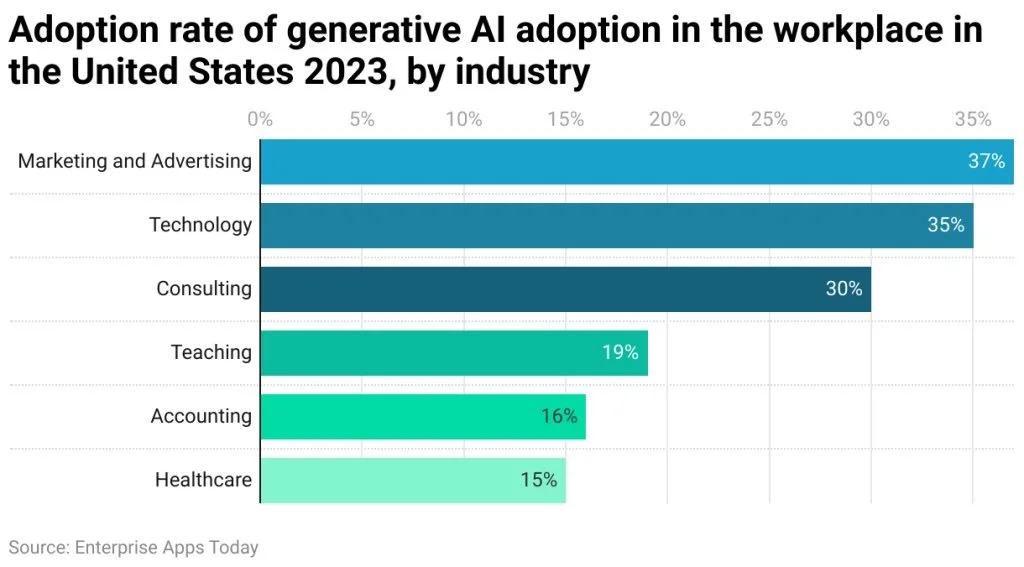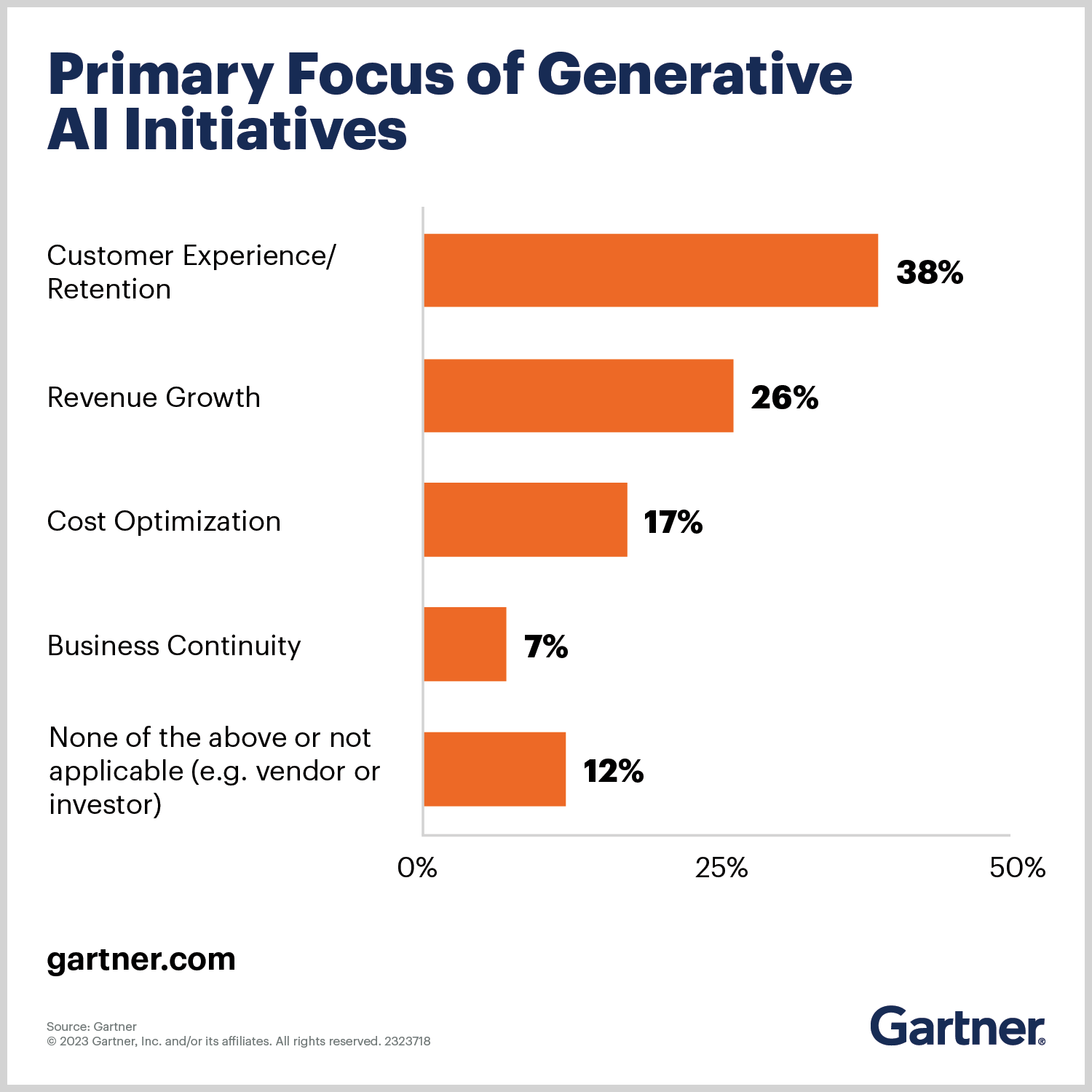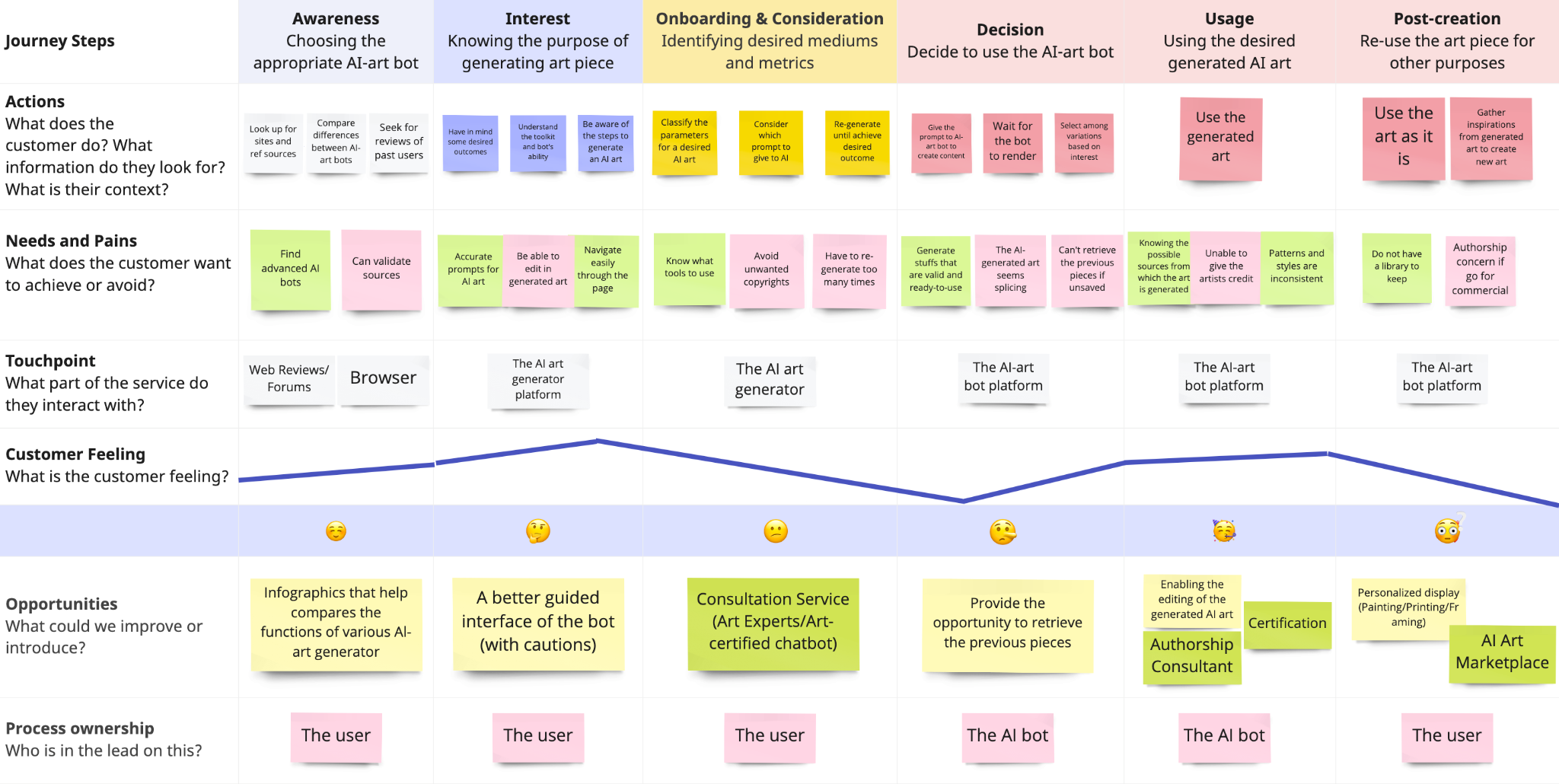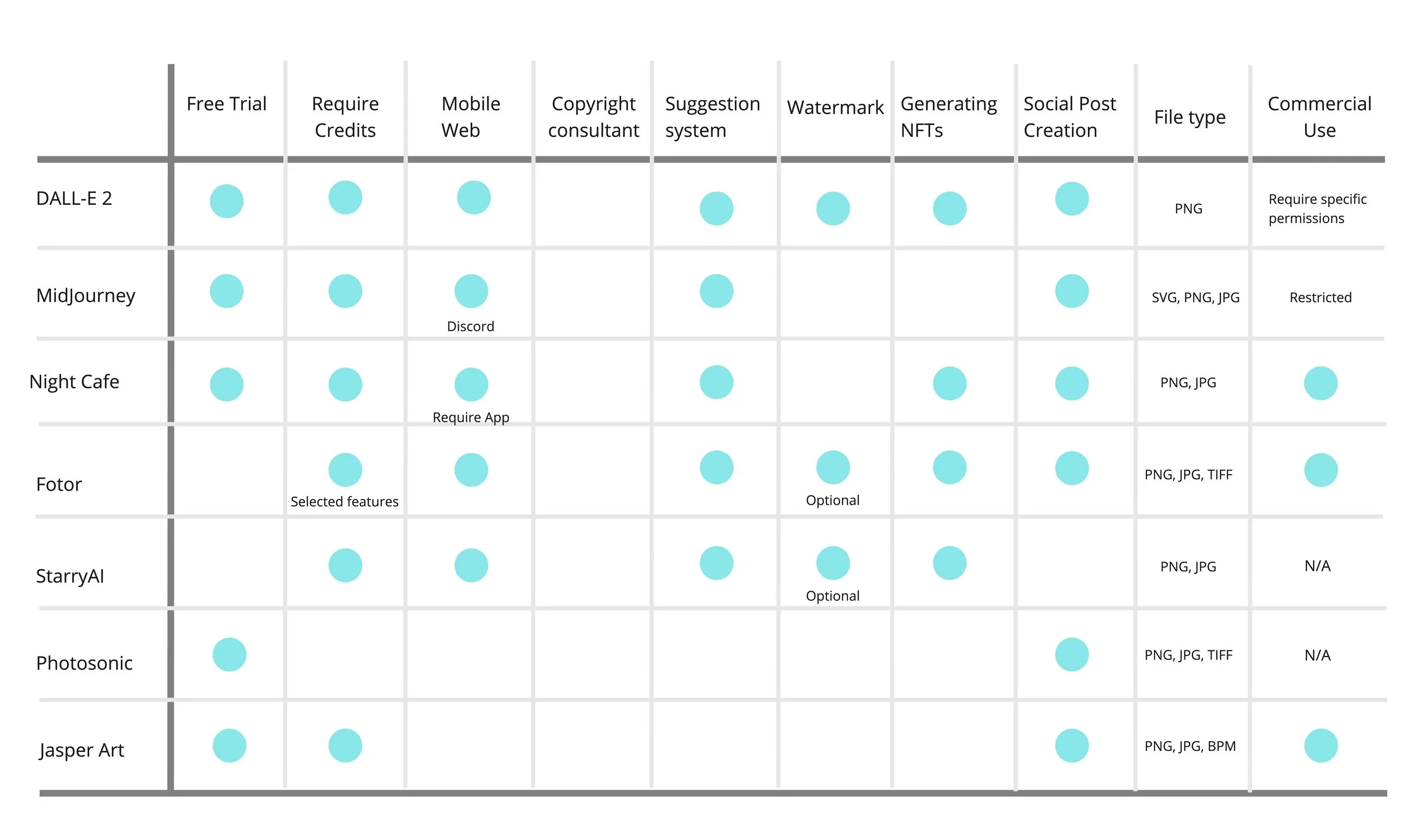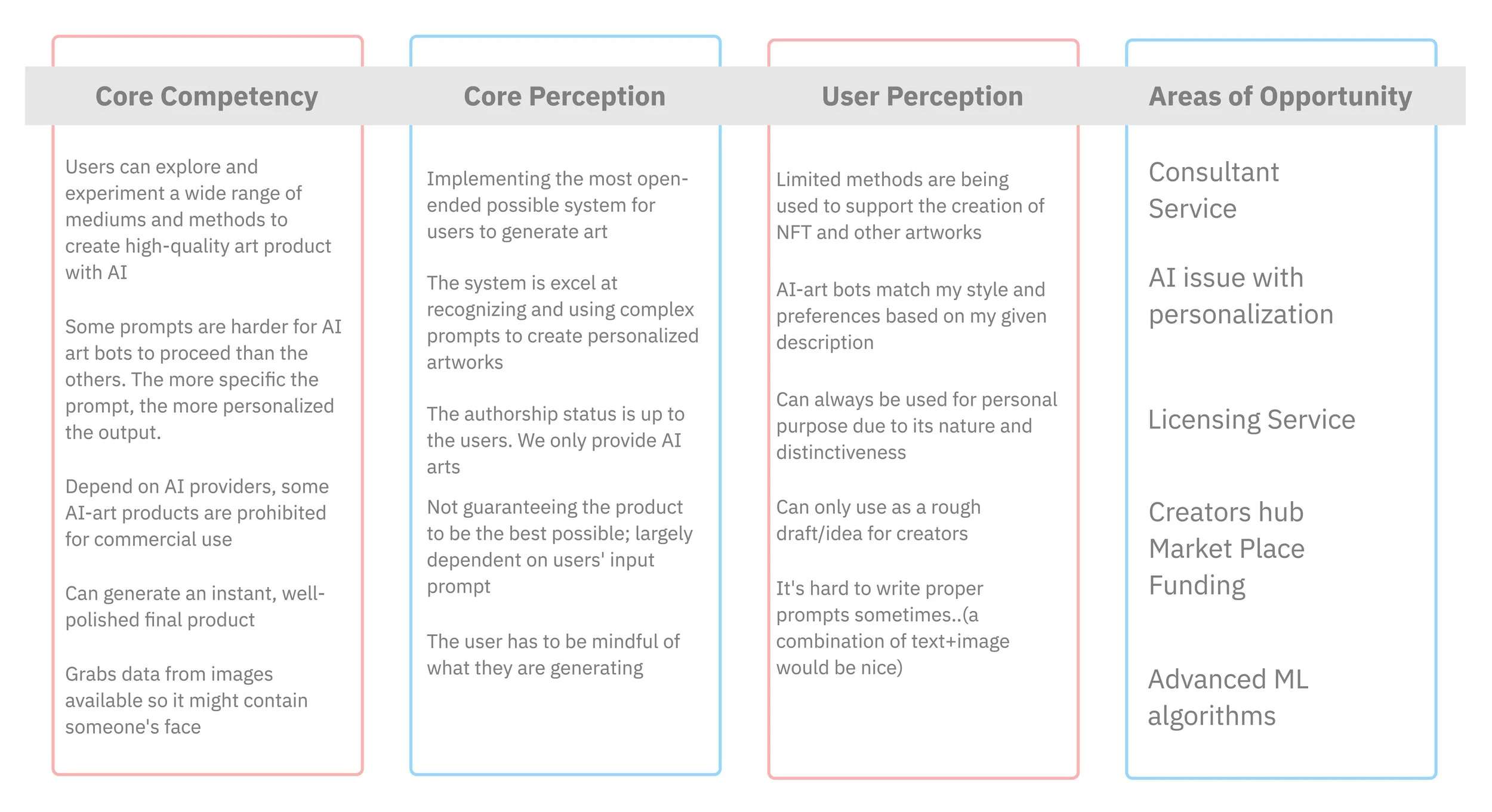A UX Case Study | Service Design Research
Genie Us
In the age of AI co-creation, how can we ensure users engage with AI-generated art both effectively and ethically?
PROJECT TYPE
UX Research, UX/UI Design
Service Design
MY ROLE
User Research, UI Design
Wireframing & Prototyping
TEAM
Tiffany Nguyen, Disha Rathod, Kathy Zhang
TOOLS
Figma, Miro,
Adobe Photoshop
AI Art Generators (5)
TIMELINE
Feb 2023 - May 2023
(3 months)
Notes: this research was conducted in Feb 2024, 3 months after the launch of ChatGPT (Nov 30, 2022). Please note that some terms and perspectives may potentially be updated.Overview | Co-Living with AI Technology
Just as with any powerful tool, knowing the rules and guidelines for AI is fundamental to harnessing its potential effectively and ethically.
The rise of AI has opened up a new era for humankind, bringing us one step closer to a world where technology seamlessly enriches our daily experiences. As AI rapidly becomes a standard tool benefiting both businesses and individuals, understanding its applications and limitations is crucial. However, when and how we use AI can vary significantly across different contexts. Educating people about ethical considerations, best practices, and potential impacts of AI is key to ensure its responsible and effective use.
Adoption rate highlights its potential across industries
(Source: Enterprise App Today)
AI focuses on multiple dimensions of a business
(Source: Gardner)
Our Standpoint | Co-Creation
Our project explores the dual facets of AI: its transformative potential and the ethical and privacy challenges it presents. We strongly believe that, with responsible use, AI can empower people in various ways and drive positive change across different sectors. By focusing on responsible AI practices, we aim to create tools and frameworks that empower individuals and organizations, ensuring that AI contributes to one’s creative progress without compromising the standards.
Our goal is to establish a space where AI and human creativity can harmoniously collaborate, fostering innovation while upholding ethical principles.
Research | Generative AI Tools
Understand | AI x Art Definition
We decided to narrow our focus to Generative AI, and potentially AI Art, which tools now widely accessible to internet users.
Some prominent examples include ChatGPT, Gemini, Microsoft Copilot which generates human-like text based on input, and DALL-E or NightCafe which creates images from textual descriptions.
Generative AI Art is a type of digital artwork created by artificial intelligence. Instead of an artist manually creating each piece.
The AI uses algorithms to generate art based on patterns and data it has learned from existing artwork. Provide it with a prompt, and it creates images or designs that are unique and often surprising. It's like having a creative partner that uses its understanding of art to produce new and original pieces.
Prompt Engineering involves crafting prompts—specific instructions or questions—that guide the AI in generating relevant, accurate, or creative responses.
Writing effective prompts involves critical thinking and creativity. As AI art technology advances, it becomes crucial for artists and creators to understand how and when to leverage its potential. This development presents a dual-edged sword.
Our Focus
Generative AI (General)
is a type of artificial intelligence focuses on creating new content.
It’s a subset of machine learning, drawing from techniques like deep learning, reinforcement learning to generate output such as text, images, music, and more.
Define | Problem Statement
In the age of AI co-creation, how can we ensure users engage with AI-generated art both effectively and ethically?
Although the potential of AI is widely recognized, it also raises challenges related to ethics, authority, and privacy. Especially in AI art, where the integration of AI raises fundamental questions about creativity and authorship.
The use of AI to generate art challenges traditional notions of artistic originality and human agency. It prompts a reassessment of what constitutes genuine creativity and how to attribute credit and ownership in collaborative human-AI creations. Moreover, the expansion of AI art tools could disrupt traditional art markets and affect the livelihood of artists. Our project seeks to address these complexities
Design | Our Prototype
Updating
Behind the Scene | Our Design Process
Research | Audience & The Ecosystem
AI art raises ethical concerns as it generates pieces by combining artwork from various sources on the internet without acknowledging the original artists, potentially allowing AI art companies to profit from their work.
Some people argue that AI art should be defined as art created entirely by artificial intelligence, while others suggest that AI art should include any art created with the assistance of AI tools or techniques.
The stakeholders
-

The AI Platform
If the artwork is generated entirely by an AI system without any human intervention, then the credit would go to the creators and developers of the AI system.
-

The Human Arttist
If a human artist uses AI tools to create an artwork, then the credit would go to the artist who conceptualized the piece and used their creative skills to guide the AI-generated output.
-

The AI Dev Team
Often, the creation of AI-generated art involves a collaboration between artists, engineers, and data scientists. In this case, credit would be shared among the team members who contributed to the project.
-

The Art Enthusiasts / Gallery owners
The individuals or organizations who showcase and exhibit the AI-art, whether in galleries or online platforms, may also receive credit for their role in promoting and sharing the art with a wider audience.


